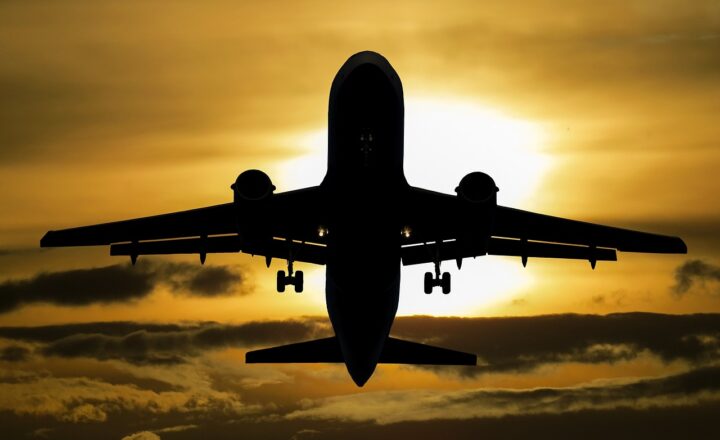How Airplane Wings Are Designed to Create Lift and Keep Planes in the Air
November 12, 2024

The engineering marvel of flight is a complex interplay of physics, aerodynamics, and meticulous design. At the heart of every aircraft’s ability to soar through the skies are its wings. Design, shape, and positioning all play crucial roles in creating lift—an upward force that enables airplanes to overcome gravity.
1. Understanding Lift: The Basic Physics
Lift is defined as the aerodynamic force that holds an aircraft in the air. In basic terms, with the right velocity and angle, the wings of an aircraft can create lift that is strong enough to counteract its weight. This phenomenon results from several factors, including air pressure differences, wing shapes, and the angle at which the wings meet the oncoming air flow (called angle of attack).
During flight, air travels over and under the wing surfaces. To appreciate this better, let’s break down the key terms:
- Airfoil: The cross-sectional shape of the wing. Airfoils are designed with a particular curvature to optimize airflow and enhance lift.
- Bernoulli’s Principle: This principle states that as the speed of a fluid increases, its pressure decreases. The shape of the airfoil causes air to flow faster over the top surface, creating lower pressure above the wing compared to the slower airflow beneath it, thus generating lift.
- Angle of Attack (AoA): The angle between the wing and the oncoming air. Increasing the AoA up to a certain limit can enhance lift, but exceeding it may cause stall, a condition where the smooth airflow separates from the wing surface, resulting in a significant loss of lift.
2. Types of Wing Design
The design of airplane wings varies widely based on the purpose of the aircraft. Here are a few prominent designs that exemplify how engineers approach the quest for optimal lift:
- Rectangular Wings: Simple and commonly used for training aircraft and gliders. They provide straightforward lift at lower speeds but can lead to inefficient performance at higher speeds.
- Tapered Wings: These wings are wider at the base and taper towards the tip. This design helps improve aerodynamic efficiency and reduces drag while maintaining lift, making it suitable for most commercial aircraft.
- Delta Wings: Characterized by a triangular shape, delta wings manage high-speed flight effectively, making them ideal for supersonic aircraft. This design offers stability and facilitates lift even at higher angles of attack.
- Swept Wings: With a backward tilt, swept wings reduce drag at high speeds by directing the airflow efficiently. They are often used in military jets and commercial aircraft designed for speed.
Each design type embodies different trade-offs in terms of lift, drag, and overall aircraft performance, depending on flight requirements.
3. Wing Components That Influence Lift
To achieve maximum efficiency and performance, wings are equipped with components that adjust airflow and lift generation:
- Flaps: These are movable parts located on the trailing edge of the wing. When deployed, flaps increase the surface area and curvature of the wing, allowing for greater lift at lower speeds, especially during takeoffs and landings.
- Slats: Found on the leading edge, slats serve to enhance lift by allowing airflow to remain attached over a larger range of angles, delaying stall occurrence.
- Winglets: These vertical extensions at the wing tips reduce vortex drag, enhancing overall aerodynamic efficiency and improving lift-to-drag ratios. Many modern aircraft are equipped with winglets to optimize fuel consumption and performance.
By understanding how these components work together, we can appreciate the precise engineering that goes into wing design.
4. Testing and Simulation Techniques
Before the wing designs are finalized for production, they undergo rigorous testing and simulations. Engineers utilize various methods, including:
- Wind Tunnel Testing: Scale models of wings are tested in wind tunnels to observe airflow patterns and lift generation under controlled conditions. This research aids in refining designs before real-world application.
- Computational Fluid Dynamics (CFD): Advanced simulations allow engineers to analyze how complex airflow interacts with the wings virtually, leading to innovations without the physical limitations of traditional testing methods.
- Flight Testing: Once designs are validated through models, test flights are conducted to gather data on the actual flight performance, confirming that theoretical models translate into practice effectively.
Testing ensures designs are safe, efficient, and able to perform reliably in various conditions.
5. The Future of Wing Design
The future of aviation promises exciting innovations in wing design. Here are some trends to watch:
- Adaptive Wings: Engineers are exploring wings that can change shape during flight to optimize lift and drag based on changing flight conditions, enhancing fuel efficiency and performance.
- Materials Science Advances: The use of advanced light-weight materials and composites can lead to stronger, more efficient wings that require less fuel consumption and improve overall aircraft longevity.
- Sustainable Aerodynamics: Research is ongoing into designs that minimize environmental impacts, including the use of hybrid-electric propulsion systems combined with efficient lift-generating wing designs.
Innovations in wing design will not only make flying more efficient but also lead us toward a greener and more sustainable aviation industry.
Conclusion
The design of airplane wings is a testament to human ingenuity—a perfect blend of physics, engineering, and innovation. Understanding how airplane wings create lift opens a window to appreciating the complexities involved in aviation. As technology continues to evolve, we can anticipate not only improvements in performance but also enhanced safety and sustainability in air travel. And as the journey of aviation advances, so too will the artistry of wing design, allowing us to stay airborne for generations to come.








